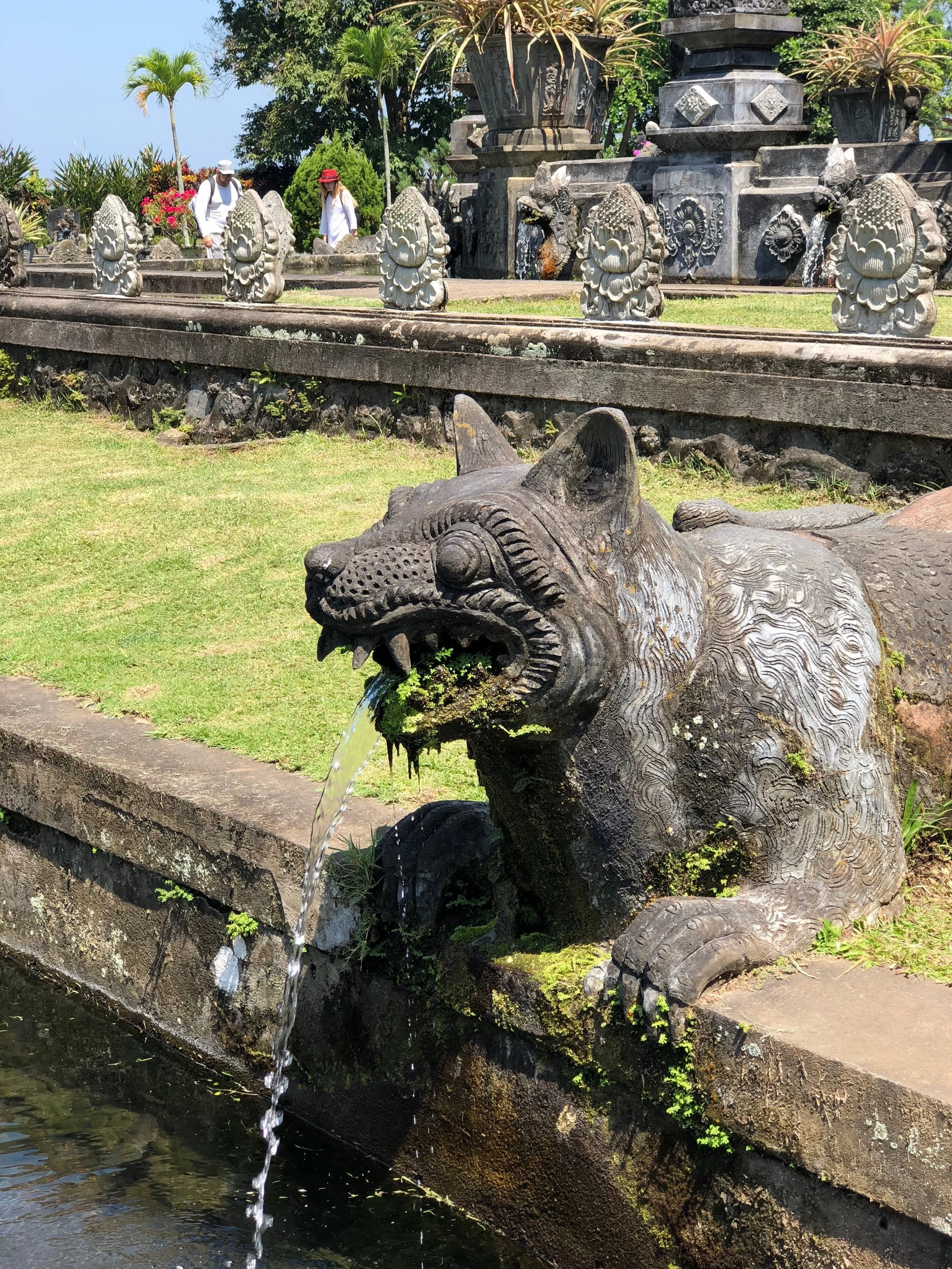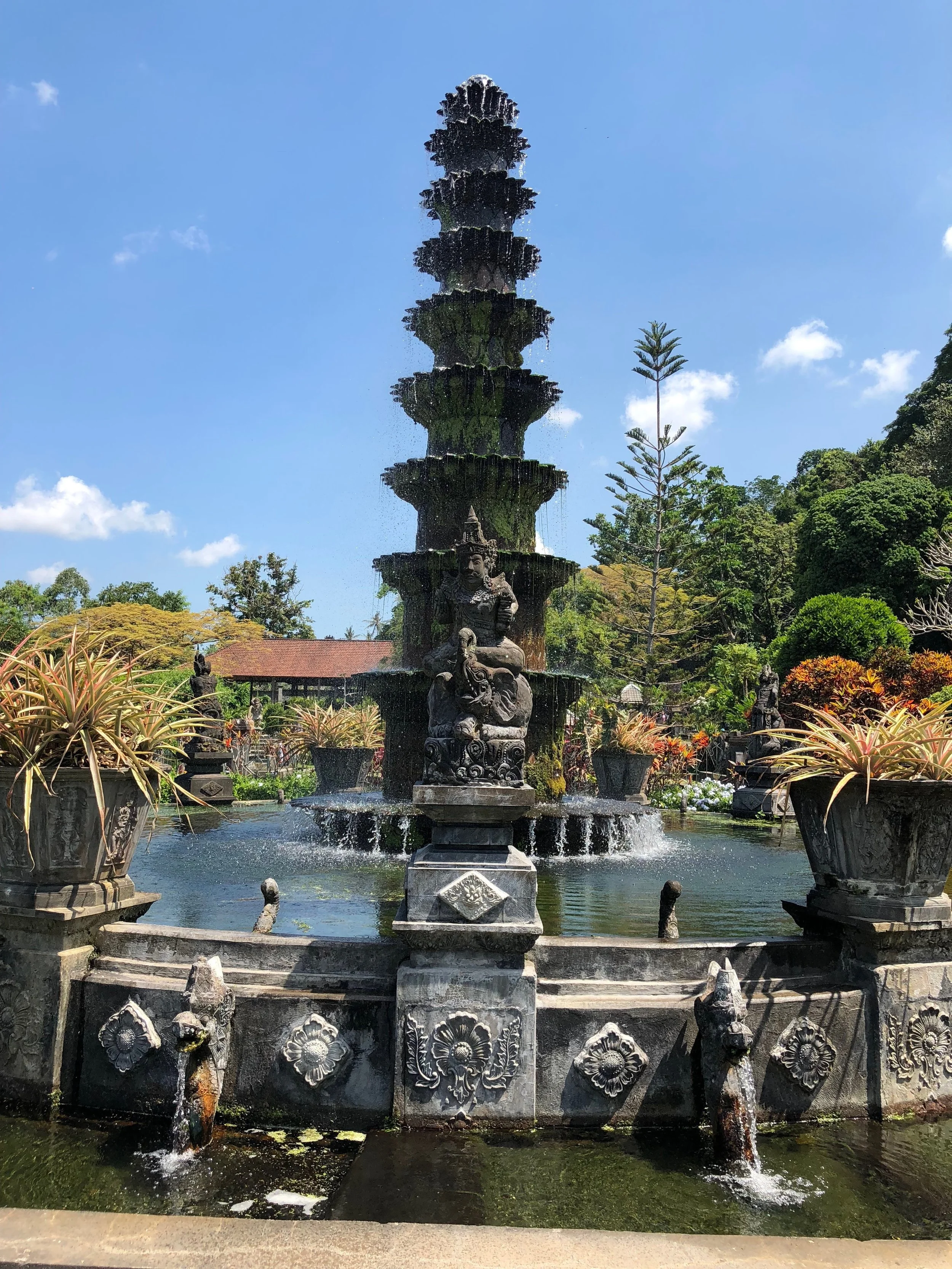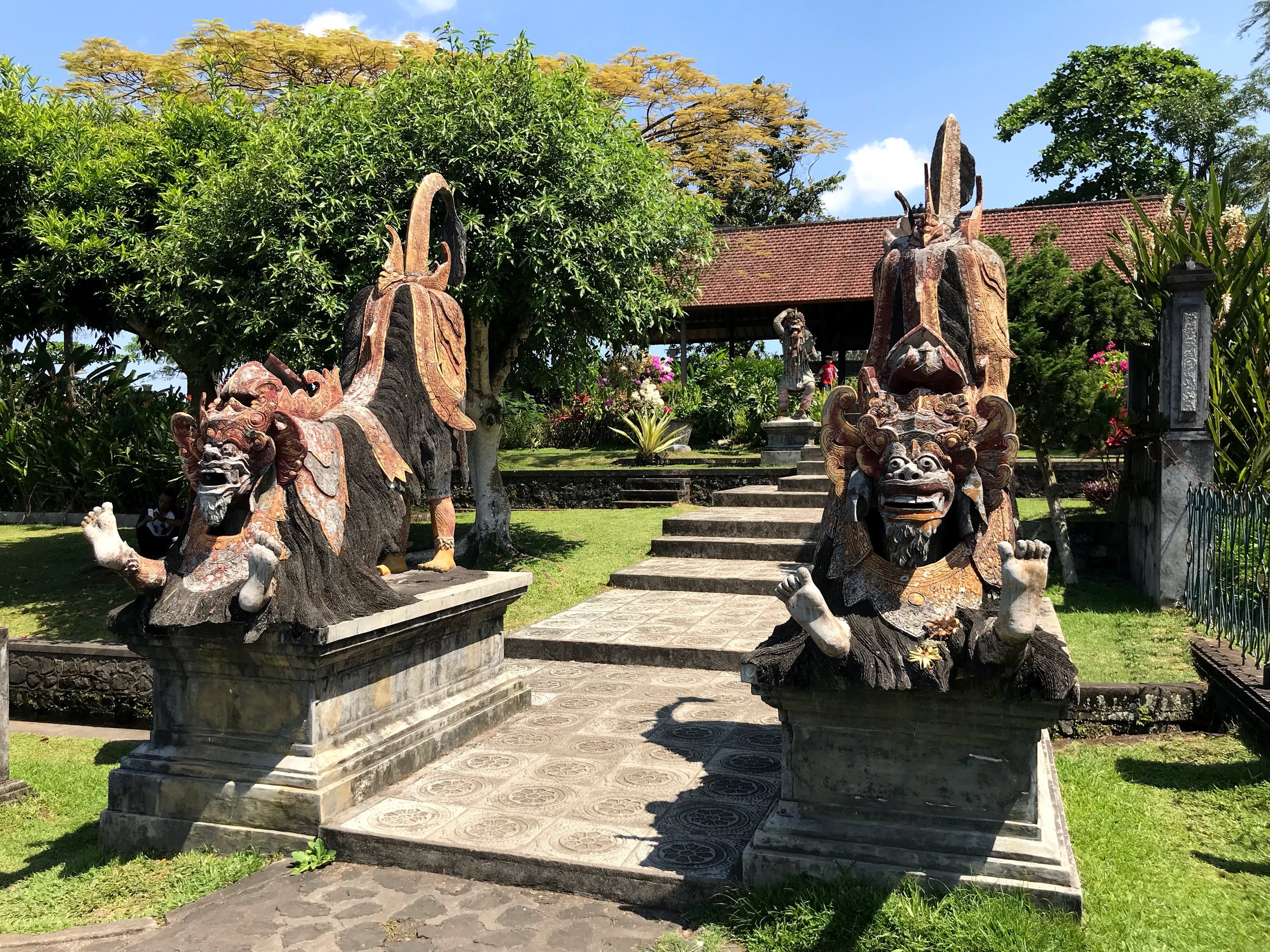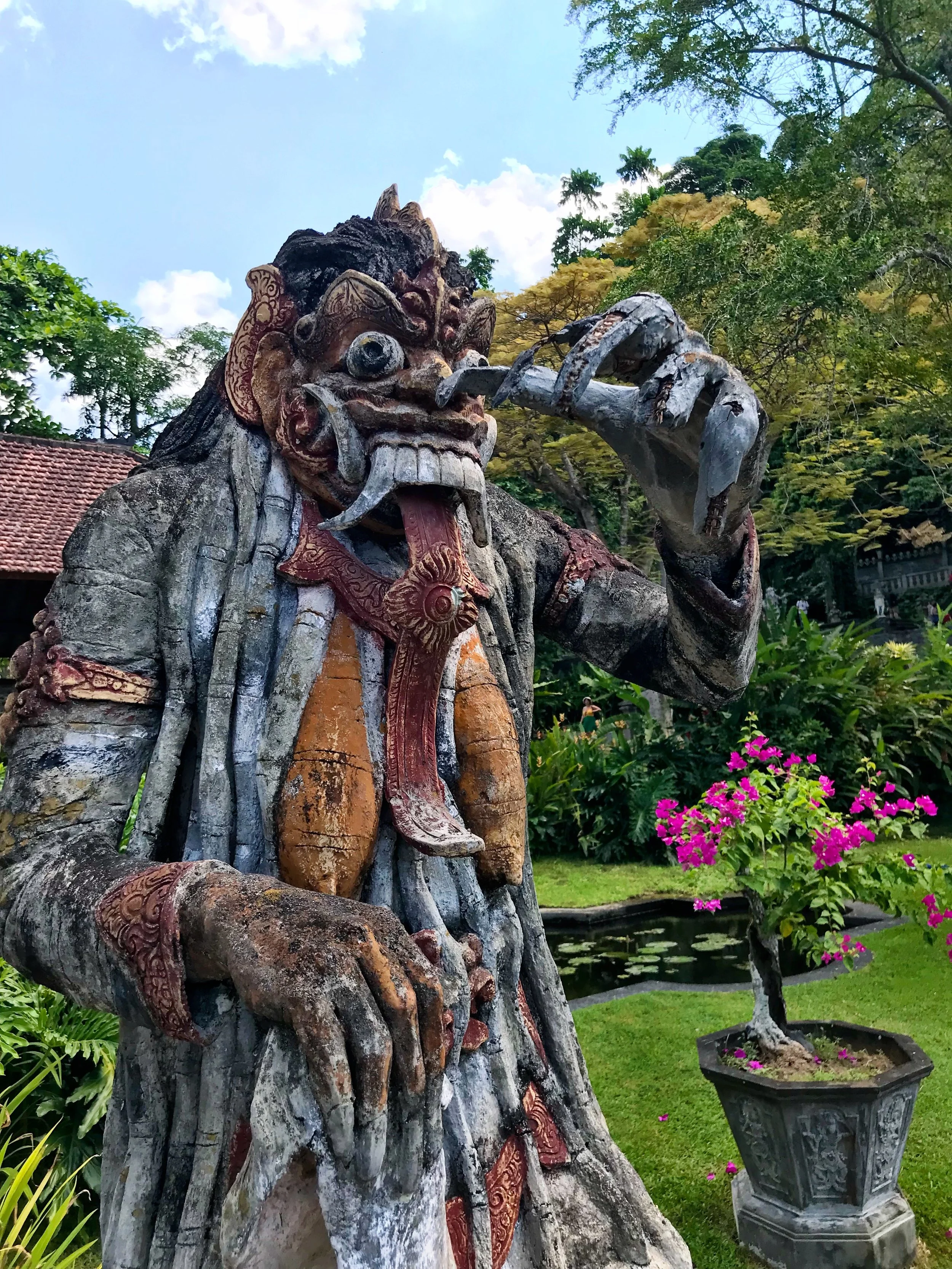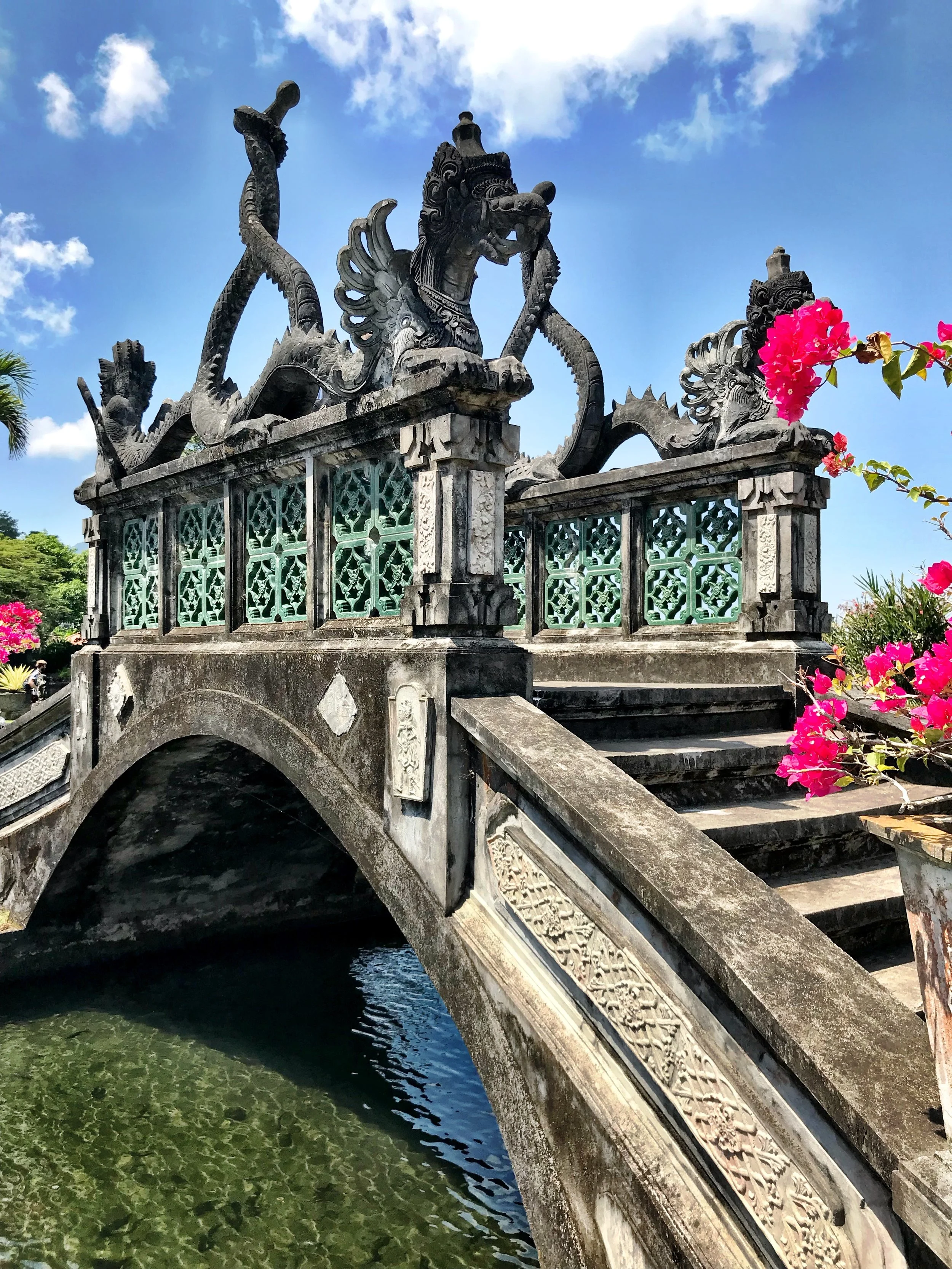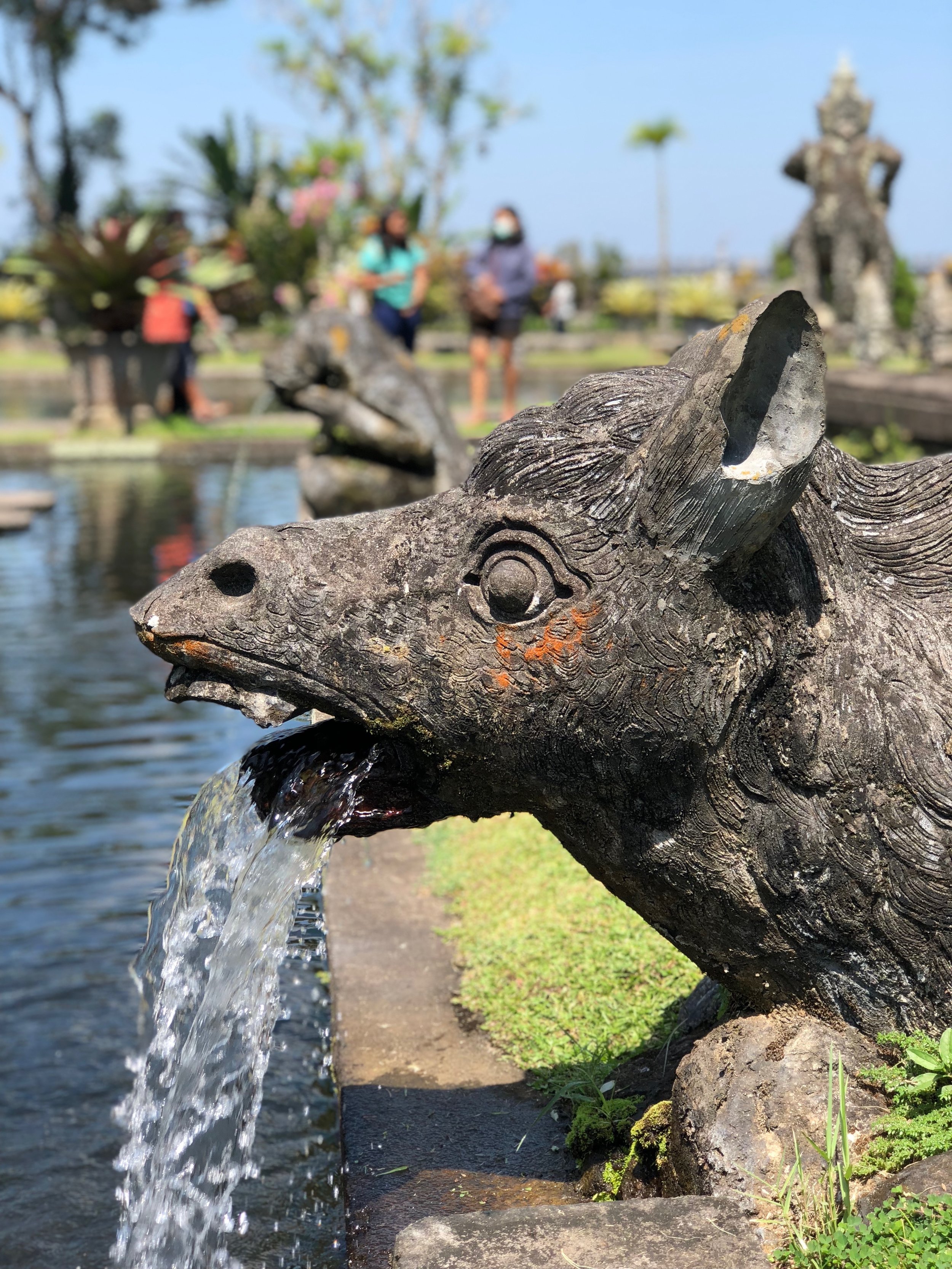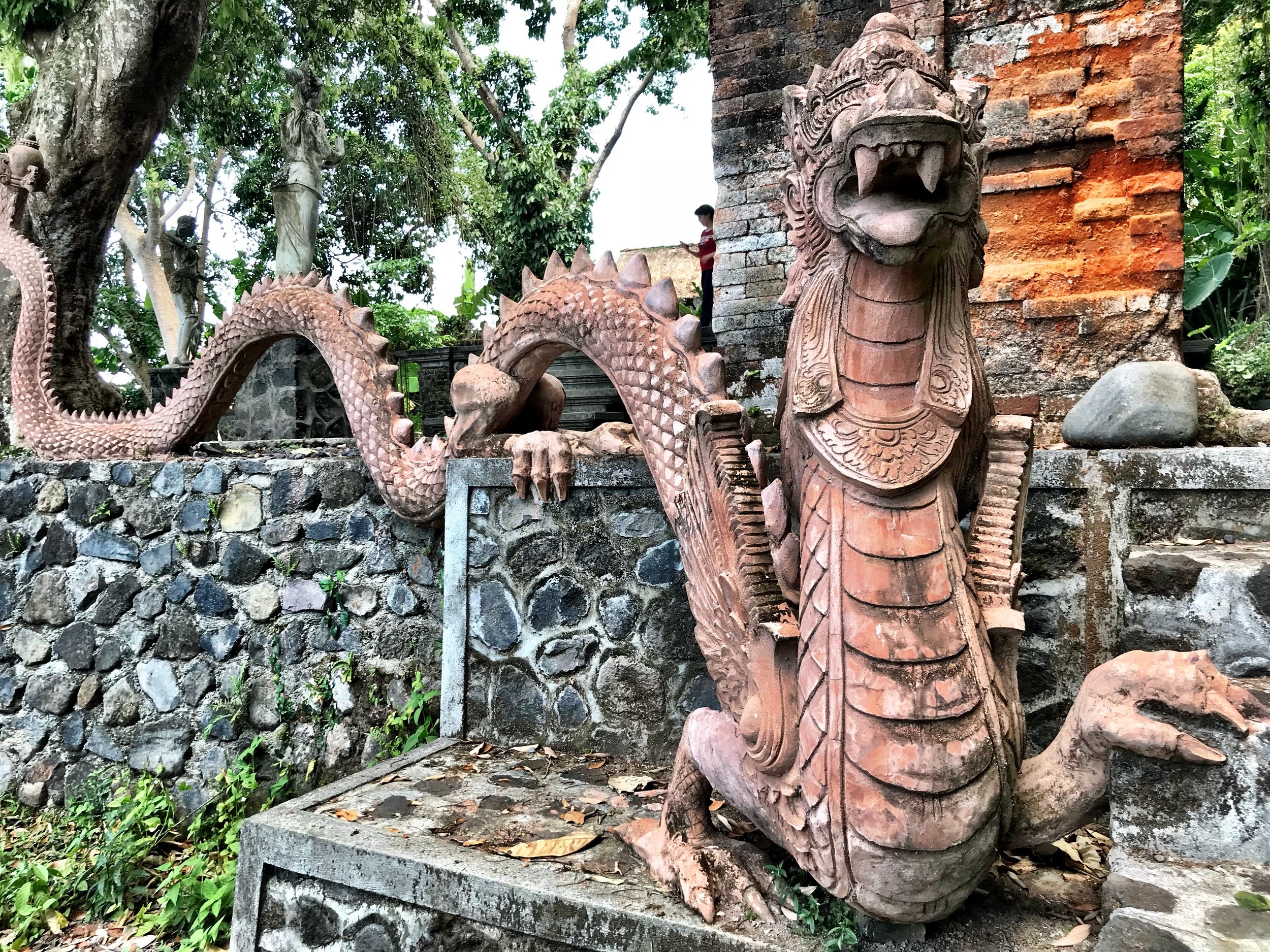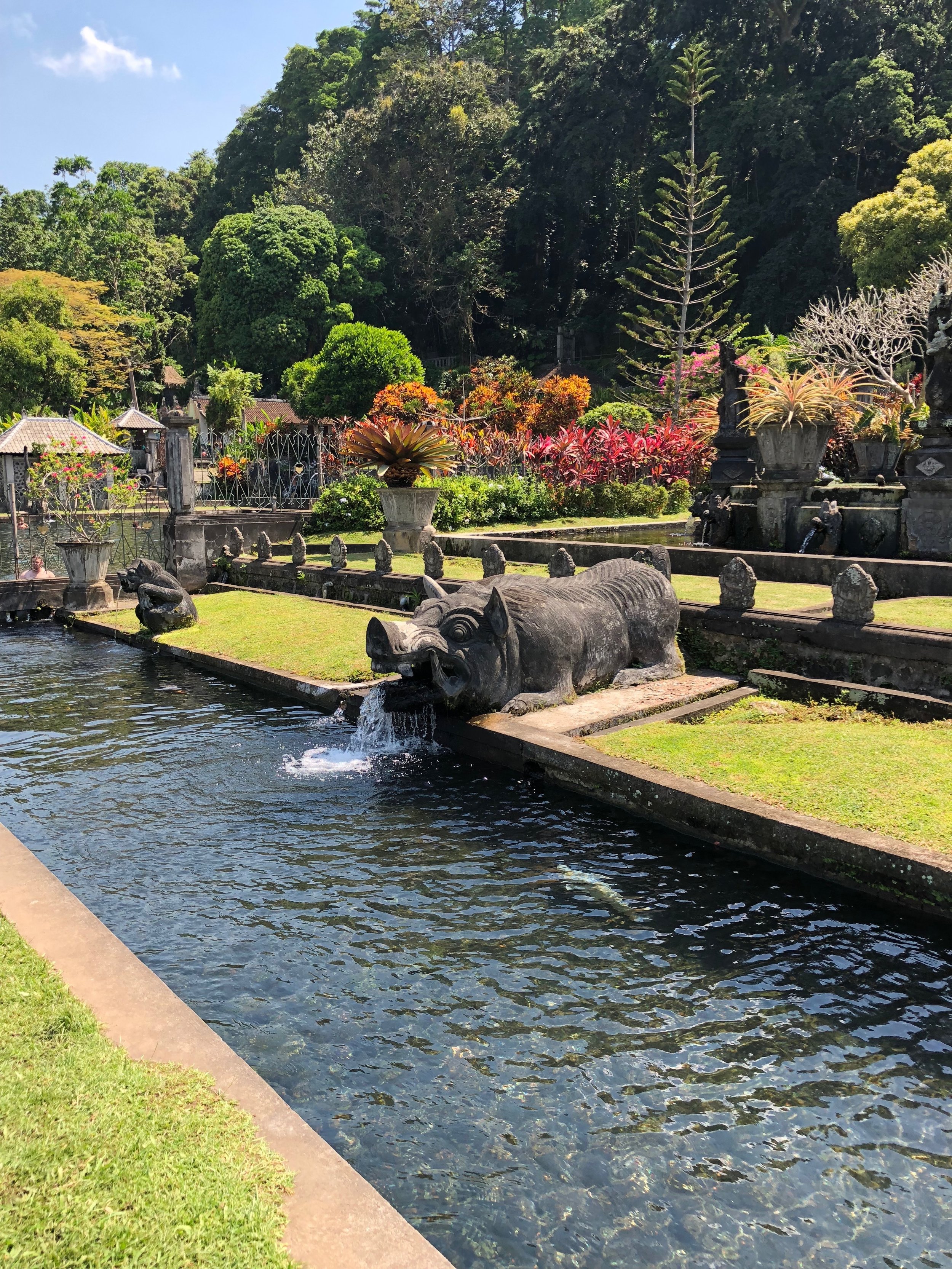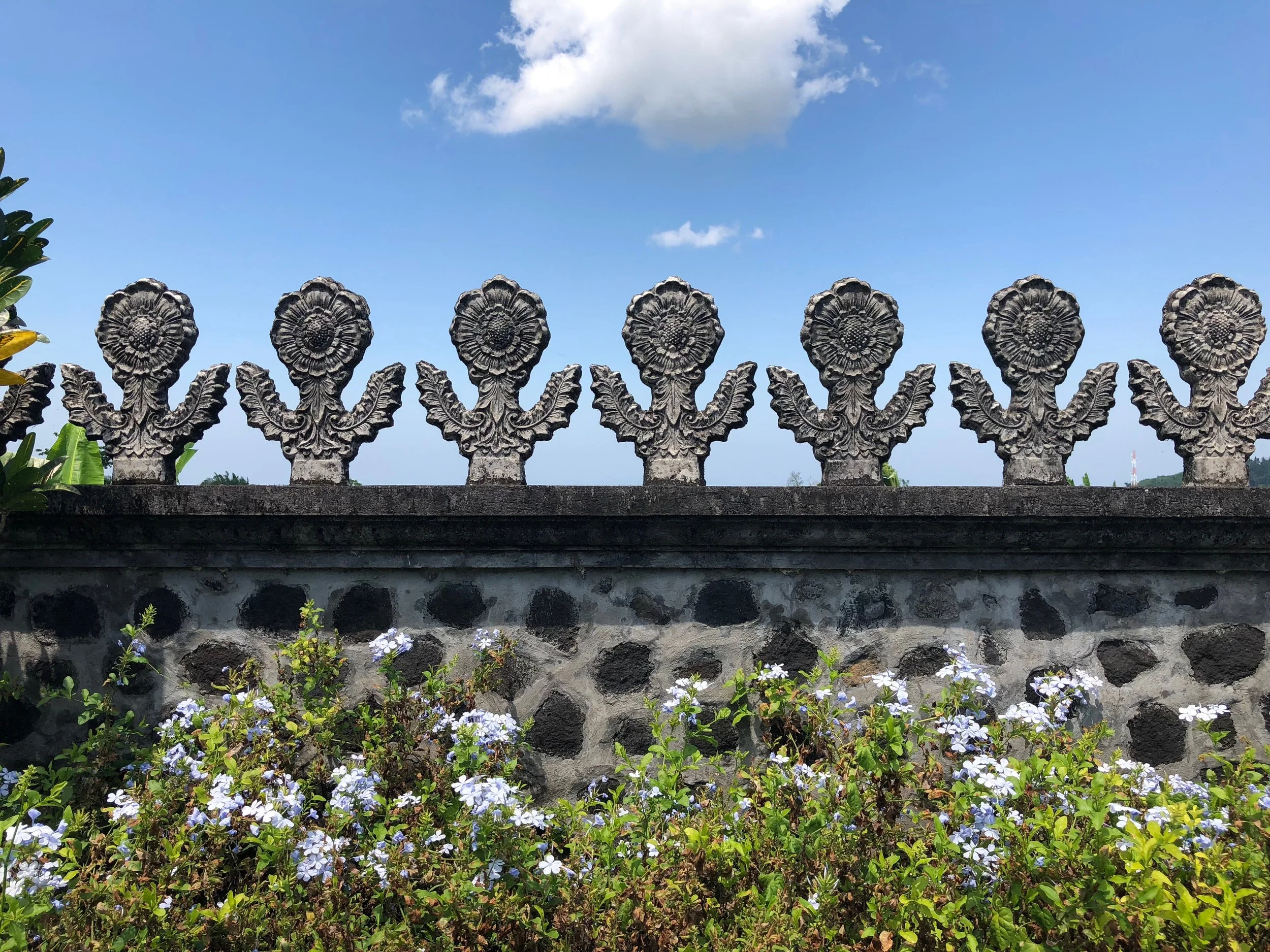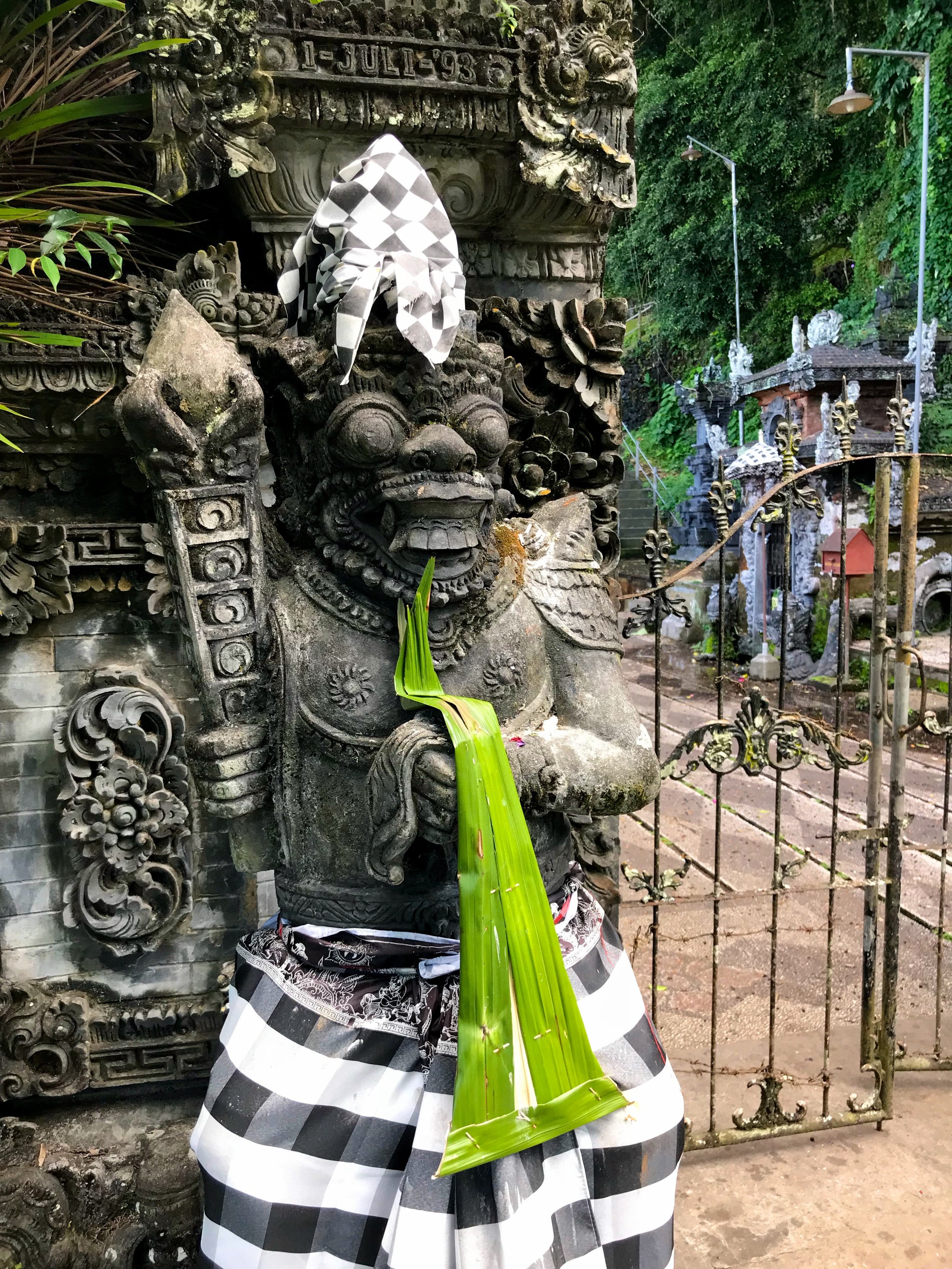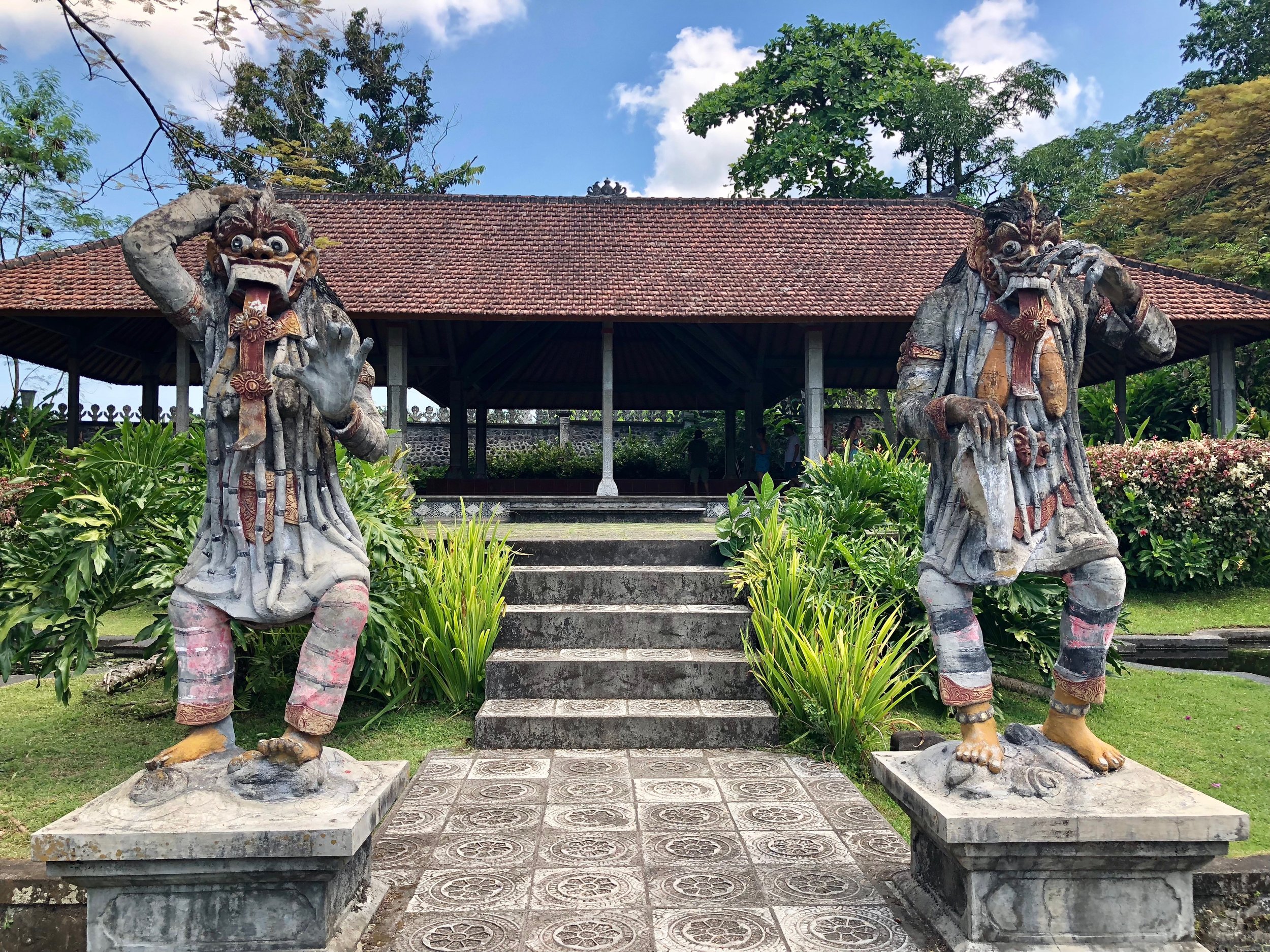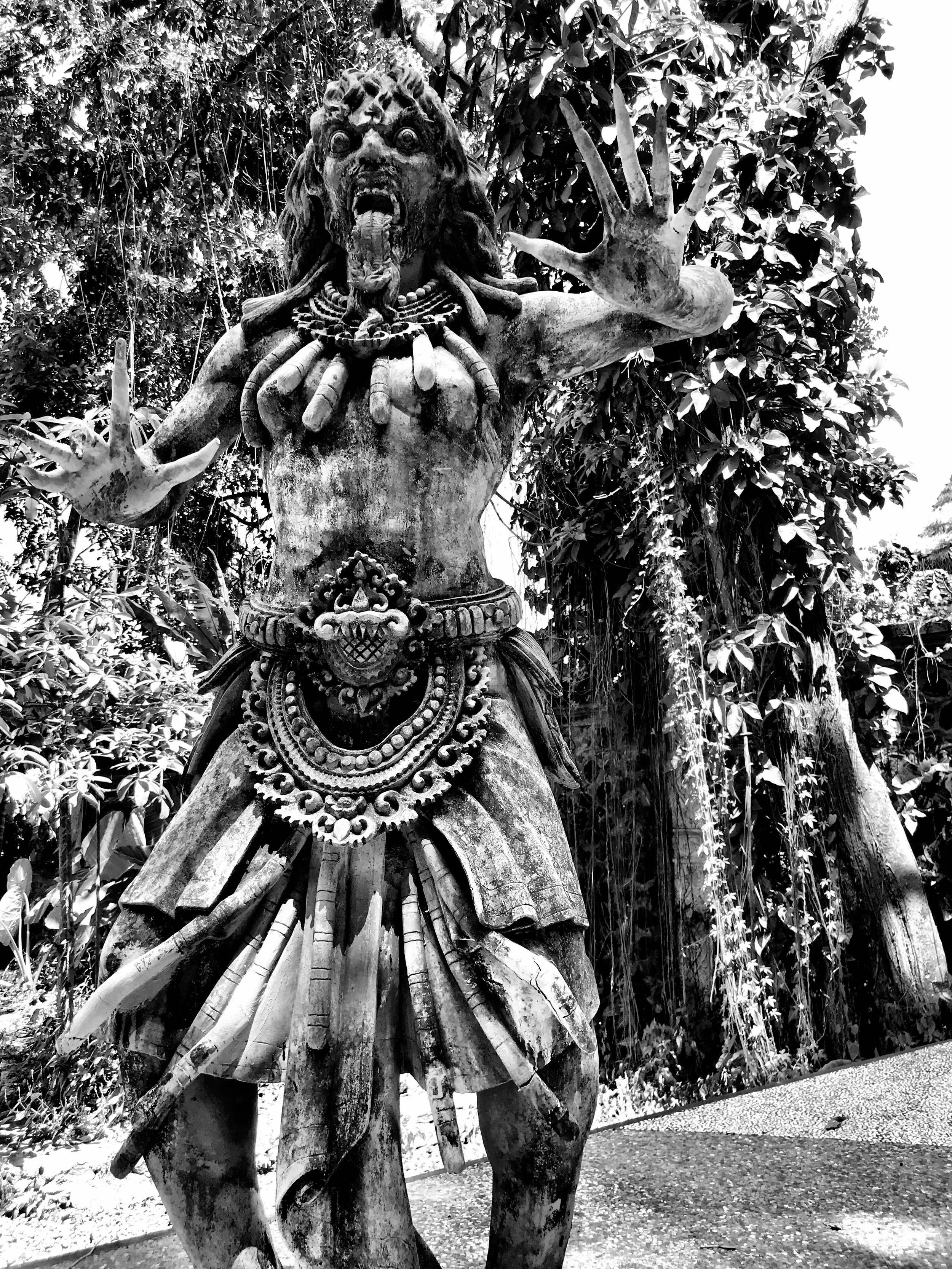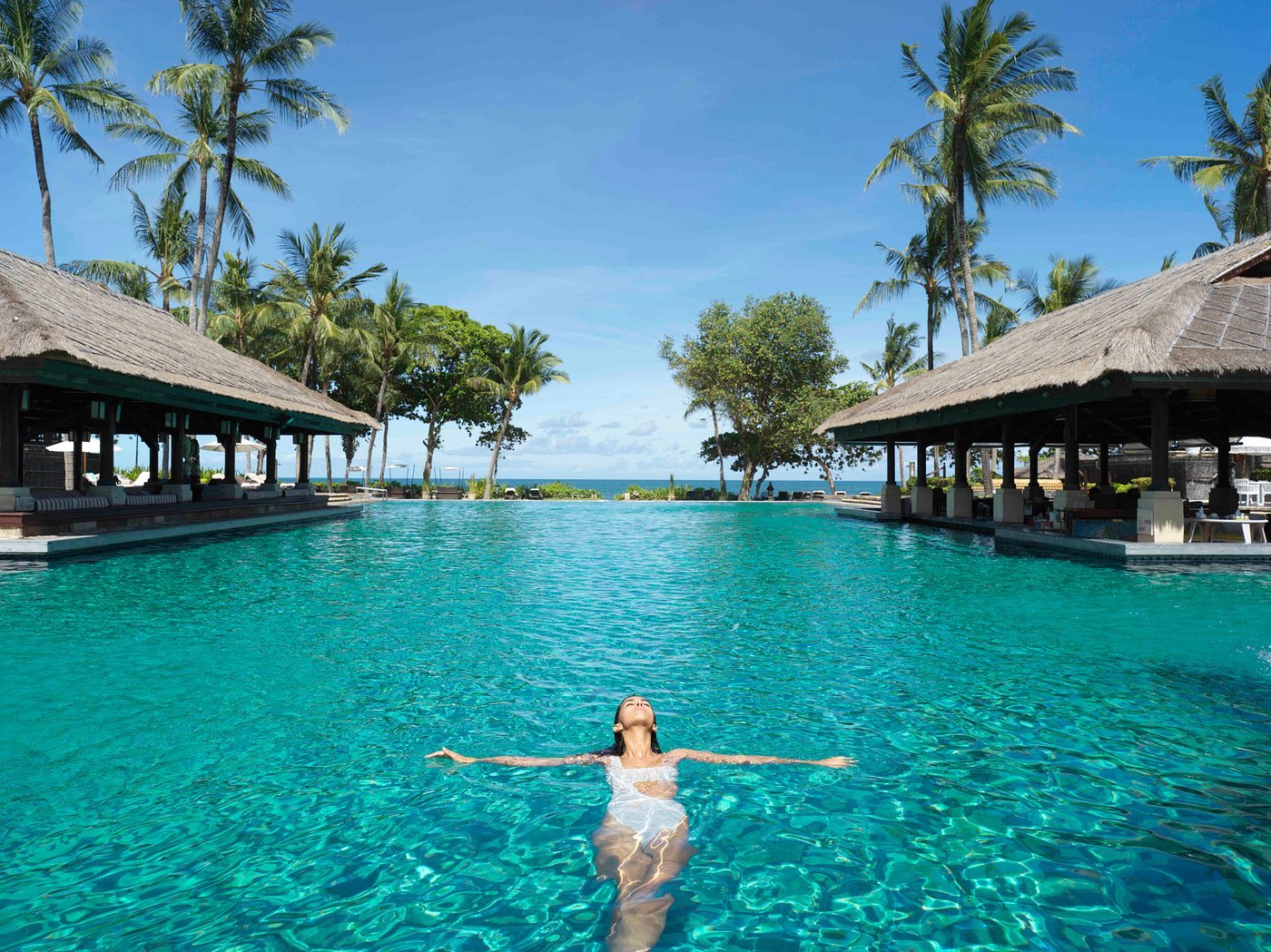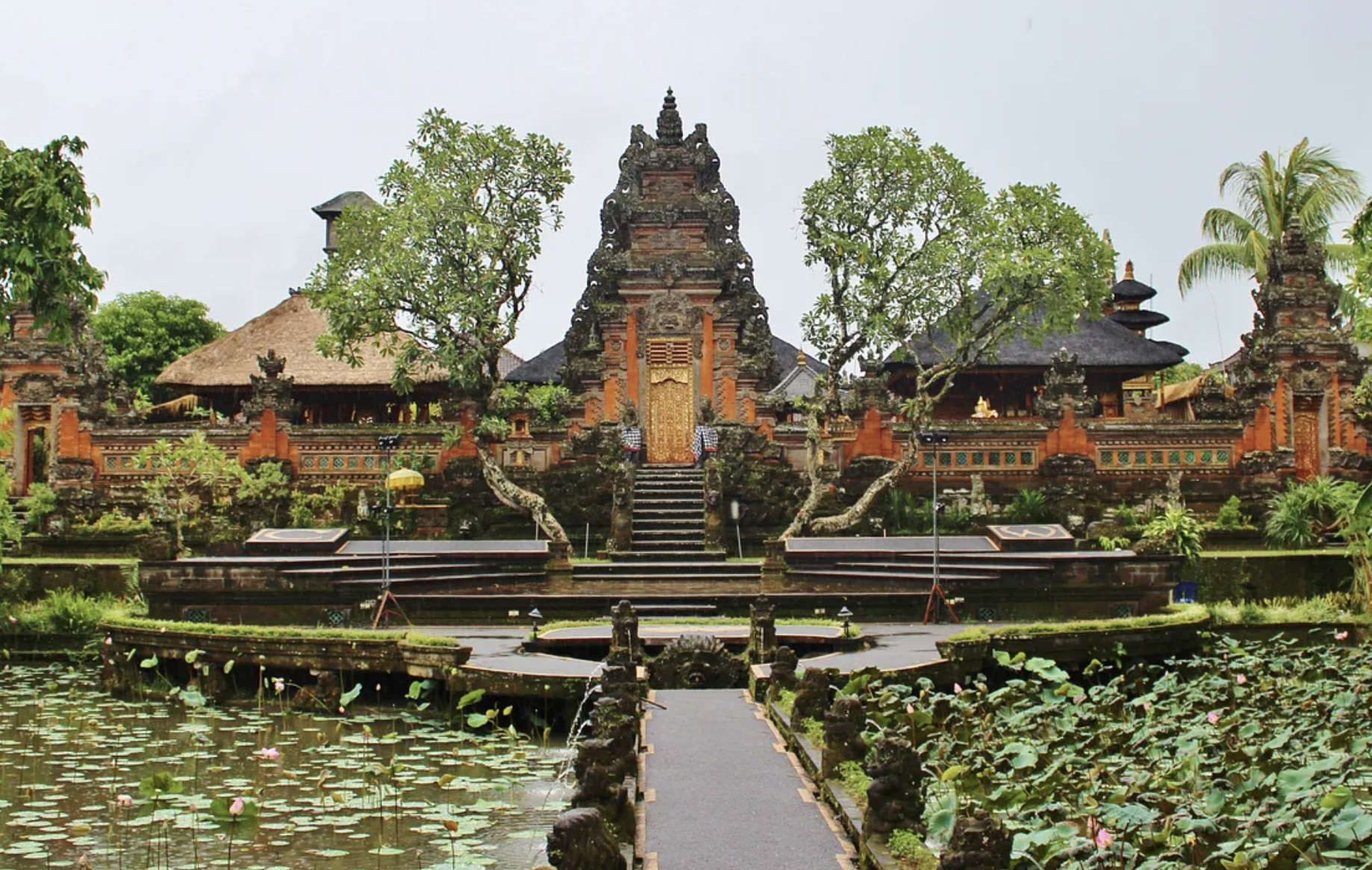Take a day trip from Ubud through Heaven and Hell and discover the enduring appeal of this royal Bali water park.
The last raja of Karangasem built these gorgeous gardens
Our Bali itinerary was already filled with a week’s worth of activities packed into a handful of days. Then, on a whim, Wally suggested we add Taman Tirta Gangga, the lavish mid 20th century water gardens owned by the royal family of Karangasem, located two hours east of Ubud.
We had decided the night before to eliminate a few spots from our checklist, as we both quickly came to a realization from a previous day’s excursion — getting around on the two-lane roads on Bali is not the easiest, as they weren’t built for the amount of vehicles now using them.
“If you bathe in the waters on a full moon, you will miraculously be blessed with youth and cured of illnesses.”
We had found and hired a driver that Wally liked because he was wearing a traditional sarong. Besides being affordable, our driver Made (pronounced Meh-day) cost about $50 for the day. I was resistant to visiting Tirta Gangga at first, but in the end agreed it’d be worth making a road trip.
The stepping stones in the Mahabharata Pond at Tirta Gangga get a bit crowded
The Royal Water Gardens of Tirta Gangga
Tirta Gangga, whose name translates as “Blessed Water of the Ganges,” is surrounded by emerald green rice fields and rests upon a natural spring.
The enclosed recreational gardens occupy 2.5 acres and were built in 1948 by the last raja of Karangasem. An imaginative and budding architect, he was influenced by a visit to the gardens of Versailles, France.
During construction, it was a great surprise for visitors to find the raja spending his days knee-deep in the mud, steadily working alongside local craftsmen.
In this water garden, the source of its many water features is located beneath a sacred banyan tree named Rijasa by the villagers. Like the local river Ganges, it’s considered holy.
Duke and Wally on the bridge leading to Demon Island
The waterspouts at Tirta Gangga depict various creatures
Local lore holds that if you bathe in the waters on a full moon, you will miraculously be blessed with youth and cured of illnesses.
When we arrived on a clear blue afternoon, the place was already a bit crowded. The gardens provided a glimpse into the Bali of old. The courtyards of Tirta Gangga are laid out on three levels, representing the Hindu concept of triloka, the mortal plane, the divine world and the lower realm of demons. Each level contains water features and sculptures that visitors can walk around and admire.
The first thing we saw when we entered was the monumental 11-tiered Nawa Sanga Fountain, which resembles a lotus and is Victorian in style. This fountain, together with the lower swimming pool and Mahabharata Pond, form the mortal bwah level of Tirta Gangga. The eight deity figures encircling the fountain represent the guardians of the cardinal directions and are positioned around the powerful central deity of Siwa, or Shiva, here represented as the fountain itself.
The 11 tiers of the Nawa Sanga Fountain were designed to resemble lotus flowers
We followed the footpath leading directly to the auditorium pavilion, which is perched on the higher northern level, swah, the divine world and flanked by a pair of statues, reproductions of the original benevolent beast Barong, his humanlike feet playfully poking out in front.
Barongs, their feet sticking out in a comical manner, guard the back of the gardens
Just beyond, in the garden’s northwest corner, lies a small meditation garden, with eight figures depicting samsara, the continuous cycle of life, death and rebirth, including three benevolent deities, a mortal man and mortal woman, and three horrifying demons.
Two Rangdas don’t make a right
Beware the demon queen!
One of the demons in the meditation area at the back of Tirta Gangga
Realizing we would most likely not attain enlightenment, at least not in this lifetime, we wandered over to the swimming pool. Wally was overheated and I agreed that it would be pretty special to cool off in a pool whose waters are considered sacred. After figuring out where the entrance was, we paid a small fee to take a plunge. Wally went in for a swim, while I dipped my toes in the bracing but refreshing spring water. Admittedly, I was a bit jealous that I hadn’t joined him, though I was amused by the antics of a group of college-age French boys.
Wally took a dip in the Lower Pool
A mythological creature spews water
After our swim, we visited the Mahabharata Pond. The octagonal stepping stones enabled us to walk across its surface and admire the large koi fish swimming in its crystal-clear waters. This feature is very crowded, and it’s a bit nerve-wracking letting people squeeze past you on the tiny stones as you pause for a photo. Sometimes people had to backtrack all the way to the start because they met up with someone going the opposite direction.
Duke is steppin’ out
This celestial nymph is actually Wally
There are several stone sculptures spouting water into the pond. Other sculptures depict the mythical creatures of the Indian epic from which the pool got its name. The raja’s former country house, located just beyond the Versailles Pond, has been converted into an inn.
We eventually arrived at Tirta Gangga’s largest water feature, the South Pond, which is located to the left of the gardens’ entrance and incidentally bhur, the lower realm, where monsters reside. The pond contains the provocatively named Demon Island, which can be reached via a pair of bridges featuring ornately sculpted Balinese dragons.
Dragons perch atop the arched bridge to Demon Island
Demon Island isn’t scary at all. It boasts a series of elegant quatrefoil-shaped fountains
The gardens were abandoned in 1963, when Mount Agung erupted unexpectedly after having been dormant for the past century. An ambitious restoration process began in 1979, led by the raja’s son, Anak Agung Made Djelantik, and was continued by Widoere Djelantik, the raja’s grandson, who has returned the gardens to their former glory.
Although the road trip to Tirta Gangga was a bit long, we both agreed how impressive it is and that it’s a special place worth visiting in Bali. –Duke
Tirta Gangga
Ababi
Abang
Karangasem Regency, Bali
Indonesia




